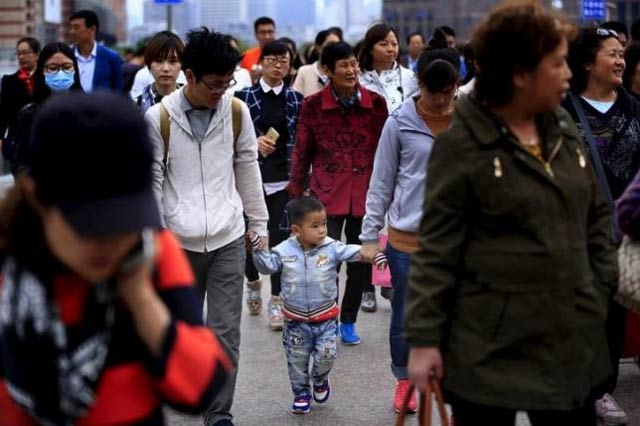
Last year, the ruling Chinese Communist Party announced it would relax its long-standing and controversial "one-child policy", allowing all couples to have two children.
China lifts one-child policy
But critics say the policy change comes too late to avert a dangerous population imbalance as many couples are now not keen on having more children.
China's population is set to peak at about 1.45 billion by 2050 when one in every three people is expected to be more than 60 years old, with a shrinking proportion of working adults to support them.
But officials would adhere to family planning restrictions "for the long term", Wang Pei'an, vice minister of the National Health and Family Planning Commission, told a news conference.
"This long-term adherence is at least 20 years, 30 years," Wang said.
"After a period of time, along with demographic changes, and along with changes in the population's socio-economic development situation, we will adopt a different population policy."
He said it was difficult to give a specific time on how long the restrictions on family size would be maintained, saying it was an issue that had to be dealt with "in line with the times".
China officially ends one child policy: state media
Asked about the danger the two-child policy would prevent China from getting rich before it got old, Wang said an aging population was a global problem and "an inevitable trend of a society's development".
China's main problem with its labor force was not the number of workers but "how to improve the quality of workers", he said.
Wang said there was a demographic "imbalance" in China between poorer regions with higher fertility levels than cities, where many people are reluctant to have more children.
The one-child policy was introduced in the late 1970s to prevent population growth spiraling out of control, but is now regarded as outdated and responsible for shrinking the labor pool.
It has also led to the problem of an aging society, with a smaller number of productive young people, a phenomenon usually seen in industrialised countries.
Two’s a crowd for many Chinese after policy change
With the adoption of the two-child policy, China's labour force could rise by more than 30 million by 2050 and its aging population will be reduced by 2 percentage points by 2030, Wang said.








1732105641-0/BeFunky-collage-(78)1732105641-0-270x192.webp)








COMMENTS (1)
Comments are moderated and generally will be posted if they are on-topic and not abusive.
For more information, please see our Comments FAQ